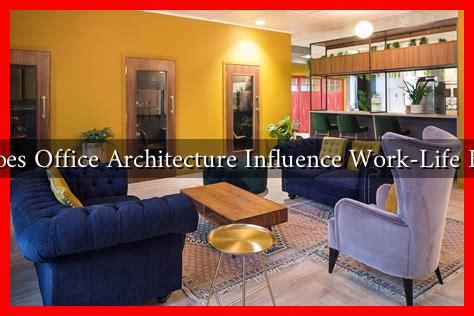-
Table of Contents
How Does Office Architecture Influence Work-Life Balance?
In today’s fast-paced world, the concept of work-life balance has gained significant attention. As organizations strive to enhance employee satisfaction and productivity, the design of office spaces has emerged as a crucial factor. Office architecture not only affects the aesthetic appeal of a workplace but also plays a vital role in shaping employees’ experiences and their ability to maintain a healthy work-life balance. This article explores how various architectural elements influence work-life balance and provides insights into creating a conducive work environment.
The Role of Office Design in Employee Well-Being
Office architecture encompasses various elements, including layout, lighting, acoustics, and the use of natural materials. Each of these components can significantly impact employees’ mental and physical well-being. Here are some key aspects to consider:
- Layout: Open-plan offices have become increasingly popular, promoting collaboration and communication. However, they can also lead to distractions and reduced privacy. A well-thought-out layout that includes both open spaces and private areas can help employees find a balance between teamwork and focused work.
- Lighting: Natural light has been shown to improve mood and productivity. Offices designed with large windows and skylights can reduce eye strain and enhance overall well-being. A study by the Heschong Mahone Group found that employees with access to natural light reported a 51% drop in eyestrain and a 63% drop in headaches.
- Acoustics: Noise levels in the workplace can significantly affect concentration and stress levels. Incorporating sound-absorbing materials and creating quiet zones can help mitigate distractions, allowing employees to focus better on their tasks.
- Biophilic Design: Integrating nature into office spaces—through plants, water features, or natural materials—can enhance employees’ connection to the environment. Research indicates that biophilic design can reduce stress and improve cognitive function.
Case Studies: Successful Office Designs
Several companies have successfully implemented innovative office designs that promote work-life balance. Here are a few notable examples:
- Google: Known for its creative office spaces, Google incorporates open areas, relaxation zones, and recreational facilities. Their offices feature amenities like nap pods and game rooms, allowing employees to recharge and maintain a healthy work-life balance.
- Airbnb: The Airbnb headquarters in San Francisco is designed to reflect the company’s values of community and belonging. The open layout encourages collaboration, while quiet spaces provide employees with areas to focus. The design also includes communal areas that foster social interaction.
- WeWork: As a co-working space provider, WeWork emphasizes flexibility in its office designs. Members can choose from various work environments, from private offices to communal areas, allowing them to tailor their workspace to their needs and preferences.
The Impact of Remote Work on Office Architecture
The COVID-19 pandemic has accelerated the shift towards remote work, prompting organizations to rethink their office spaces. As hybrid work models become more prevalent, the architecture of offices must adapt to support both in-office and remote employees. Key considerations include:
- Flexible Spaces: Designing adaptable workspaces that can be easily reconfigured for different purposes is essential. This flexibility allows organizations to accommodate varying numbers of employees on-site.
- Technology Integration: Incorporating advanced technology into office designs can facilitate seamless communication between remote and in-office employees. This includes video conferencing tools and collaborative software.
- Health and Safety: Post-pandemic office designs must prioritize health and safety, with features such as improved ventilation, touchless technology, and spaced-out workstations to reduce the risk of illness.
Conclusion: The Future of Office Architecture and Work-Life Balance
As organizations continue to navigate the complexities of modern work environments, the influence of office architecture on work-life balance cannot be overstated. Thoughtful design can enhance employee well-being, productivity, and satisfaction. By prioritizing elements such as layout, lighting, acoustics, and biophilic design, companies can create spaces that foster a healthy work-life balance.
In conclusion, the future of office architecture lies in its ability to adapt to the evolving needs of the workforce. As we move towards more flexible and hybrid work models, the design of office spaces will play a pivotal role in shaping the experiences of employees. By investing in thoughtful architecture, organizations can cultivate a culture that values both work and life, ultimately leading to a more engaged and productive workforce.
For further insights on the impact of office design on employee well-being, you can explore resources from the Gartner Human Resources.

